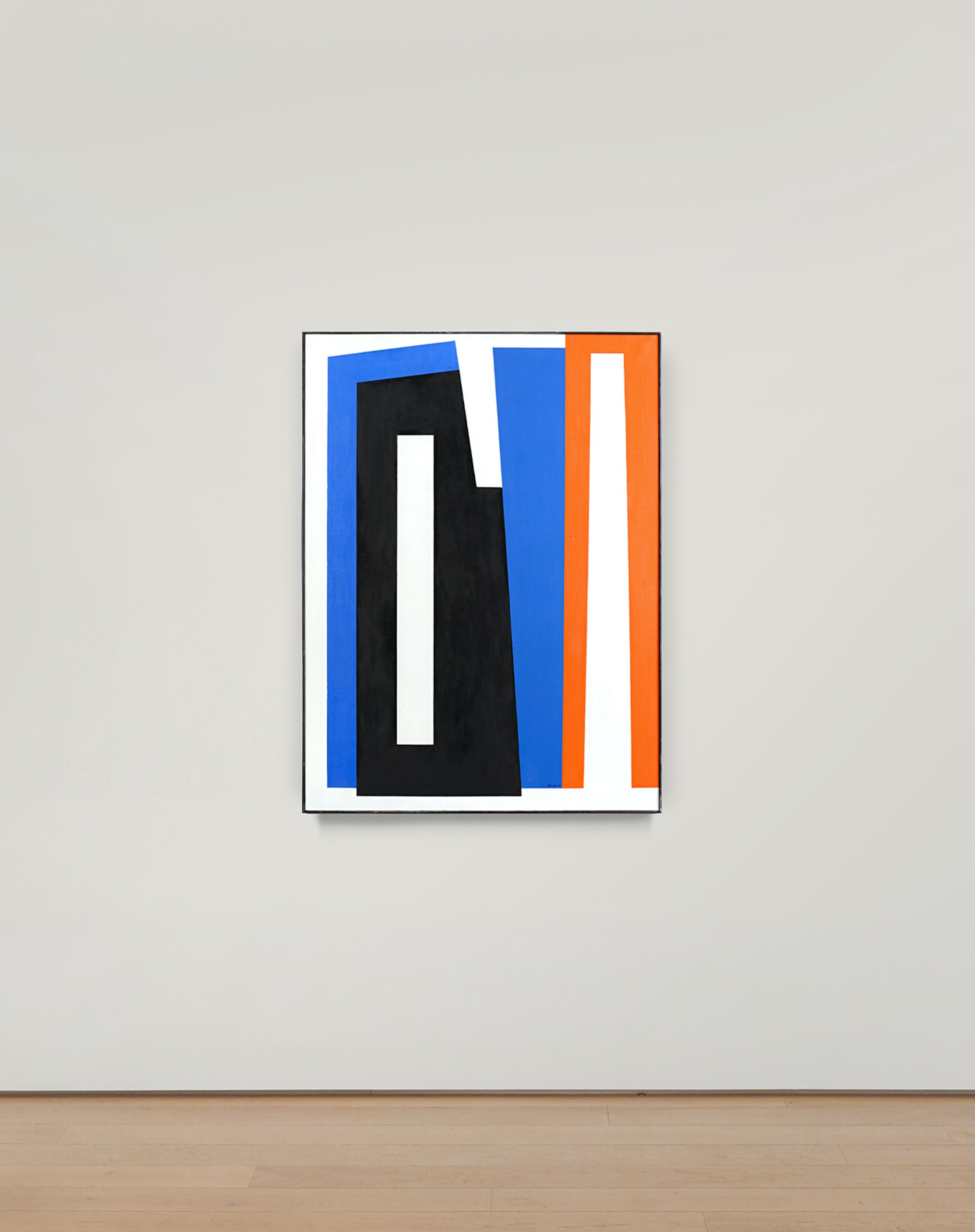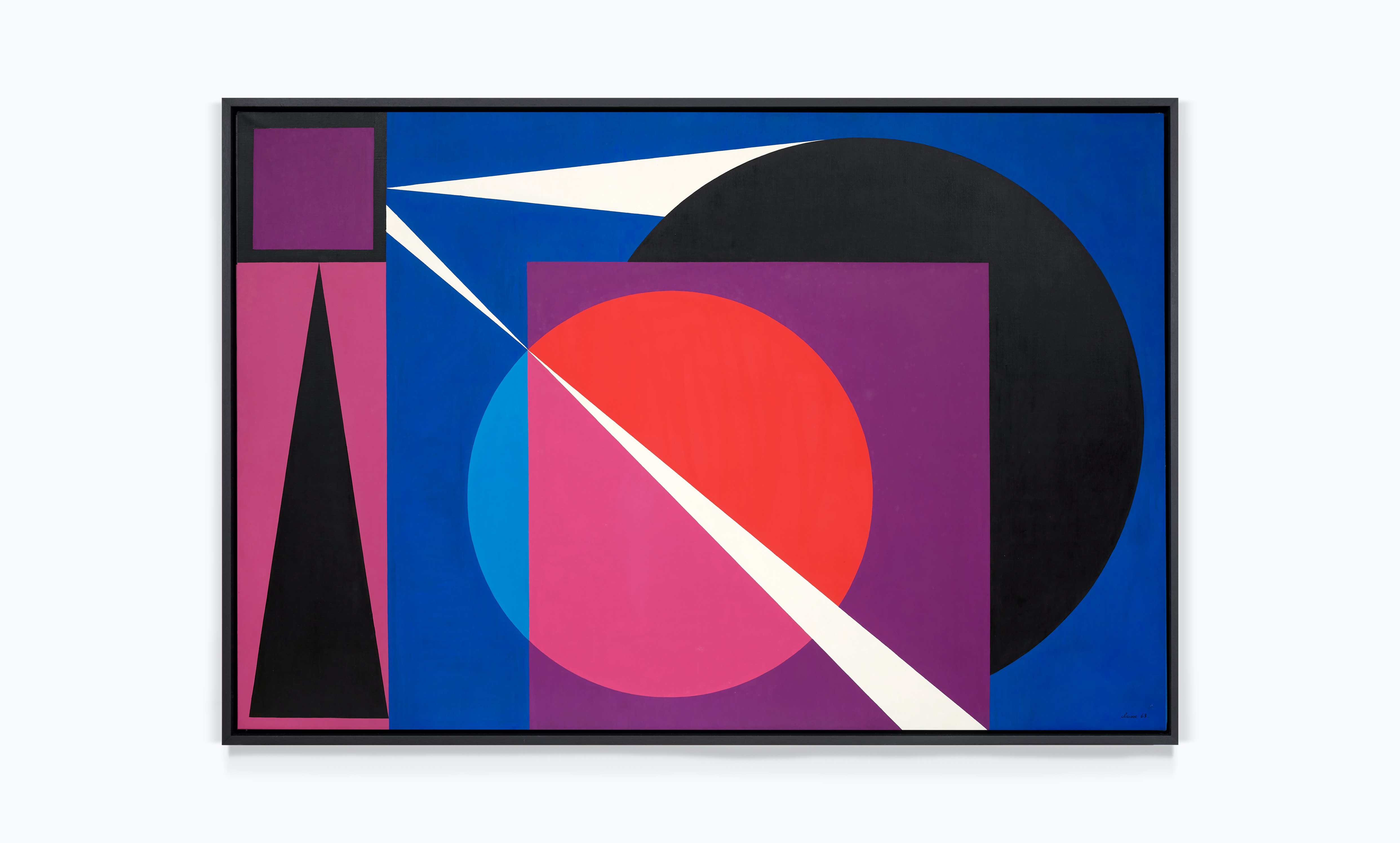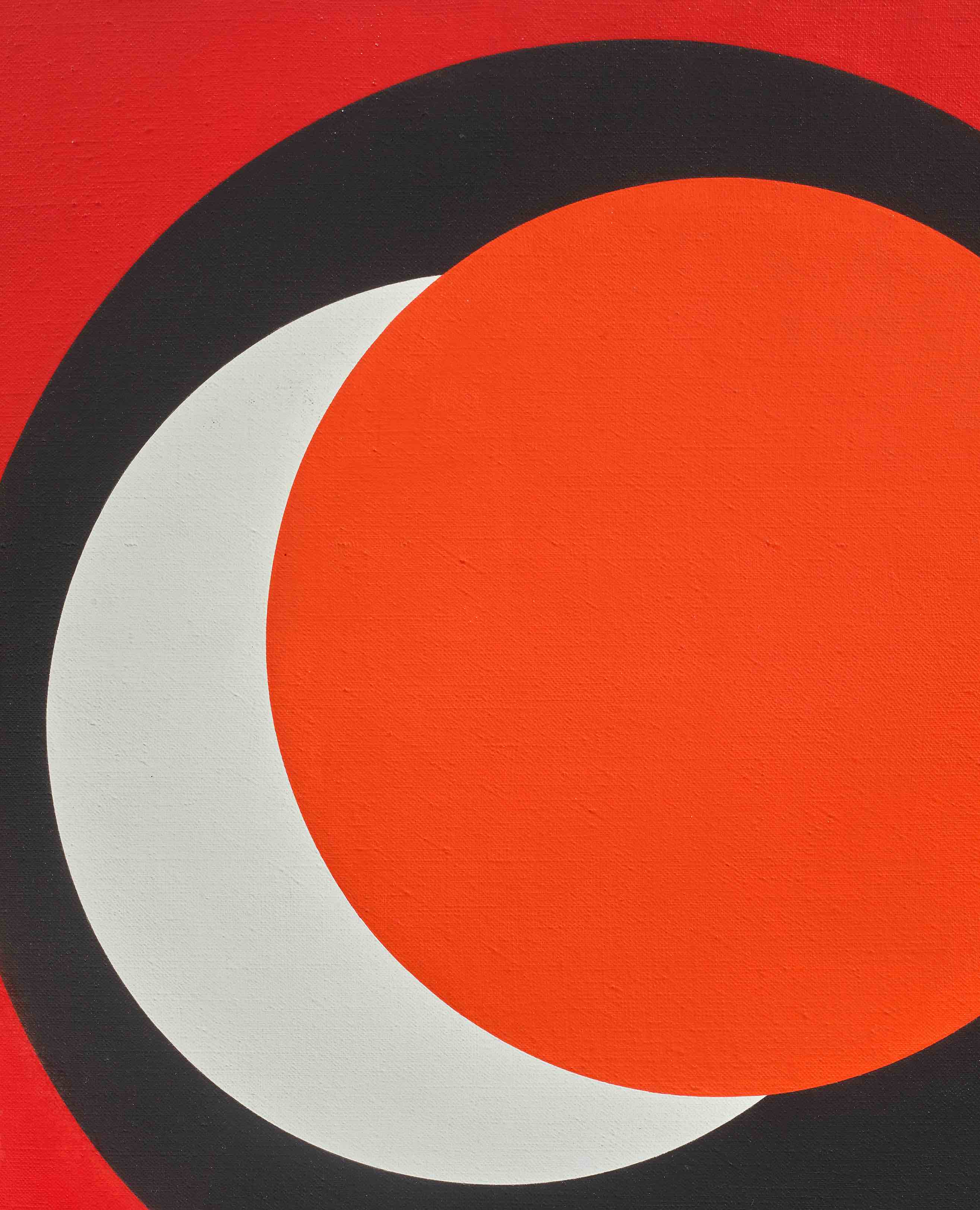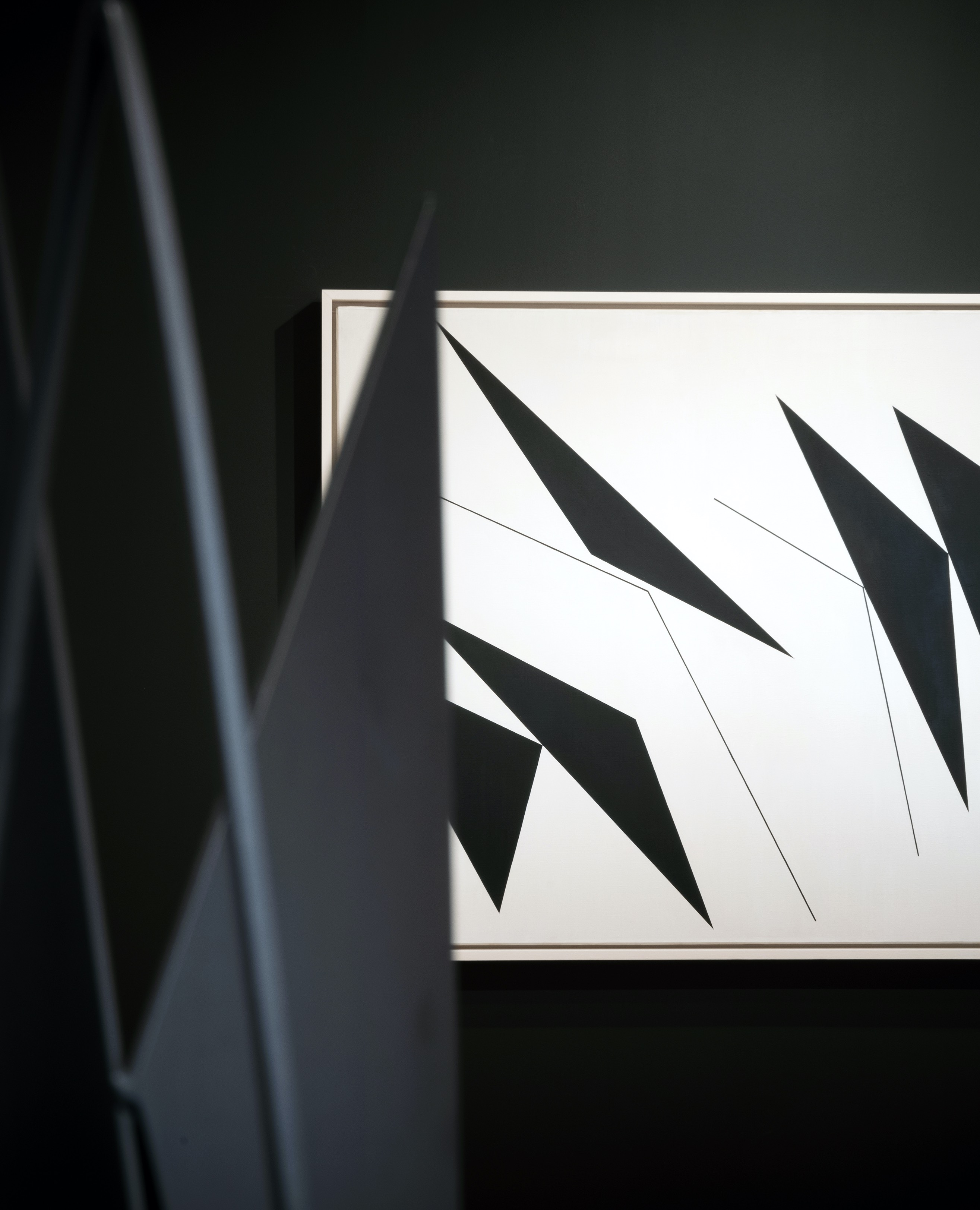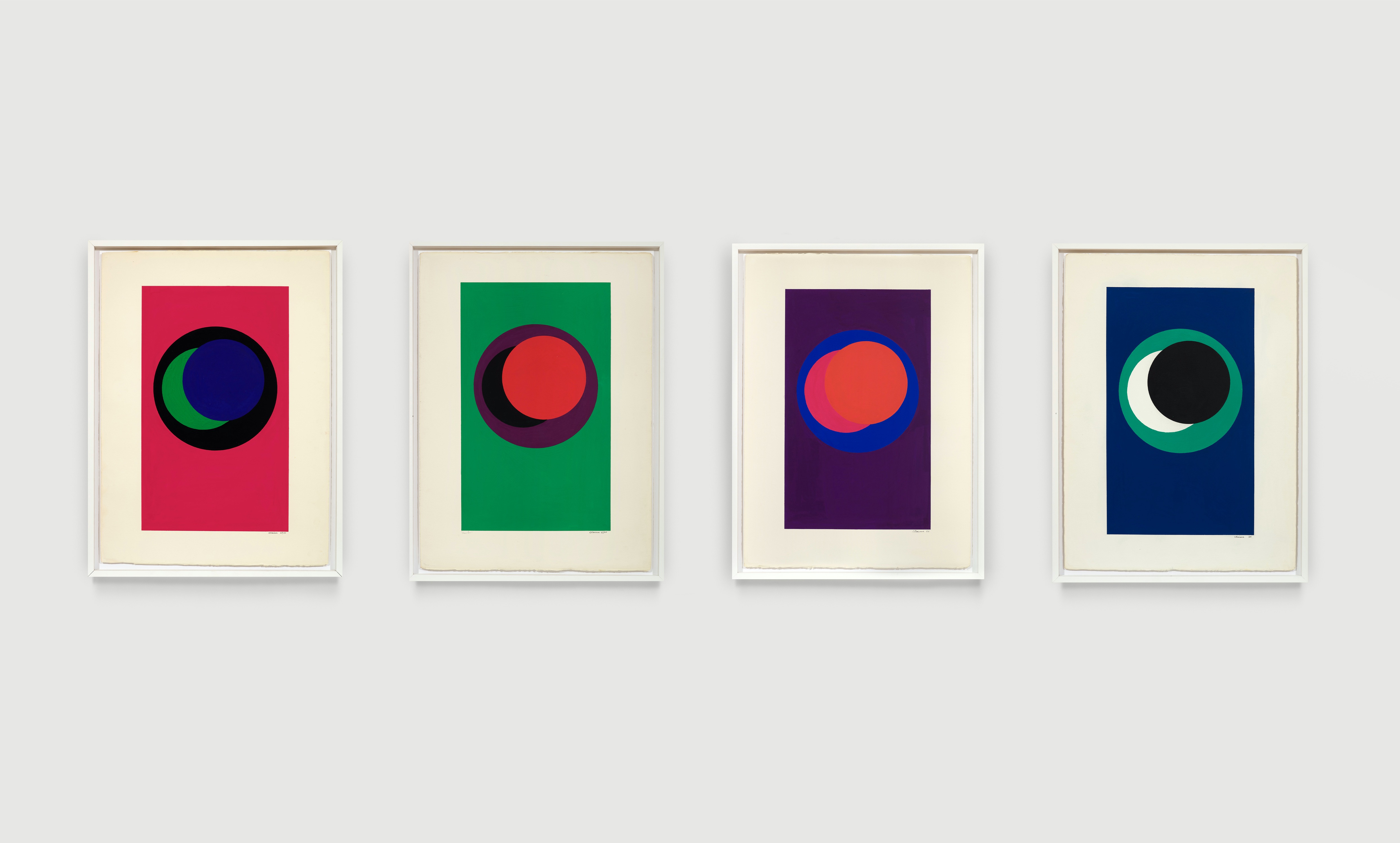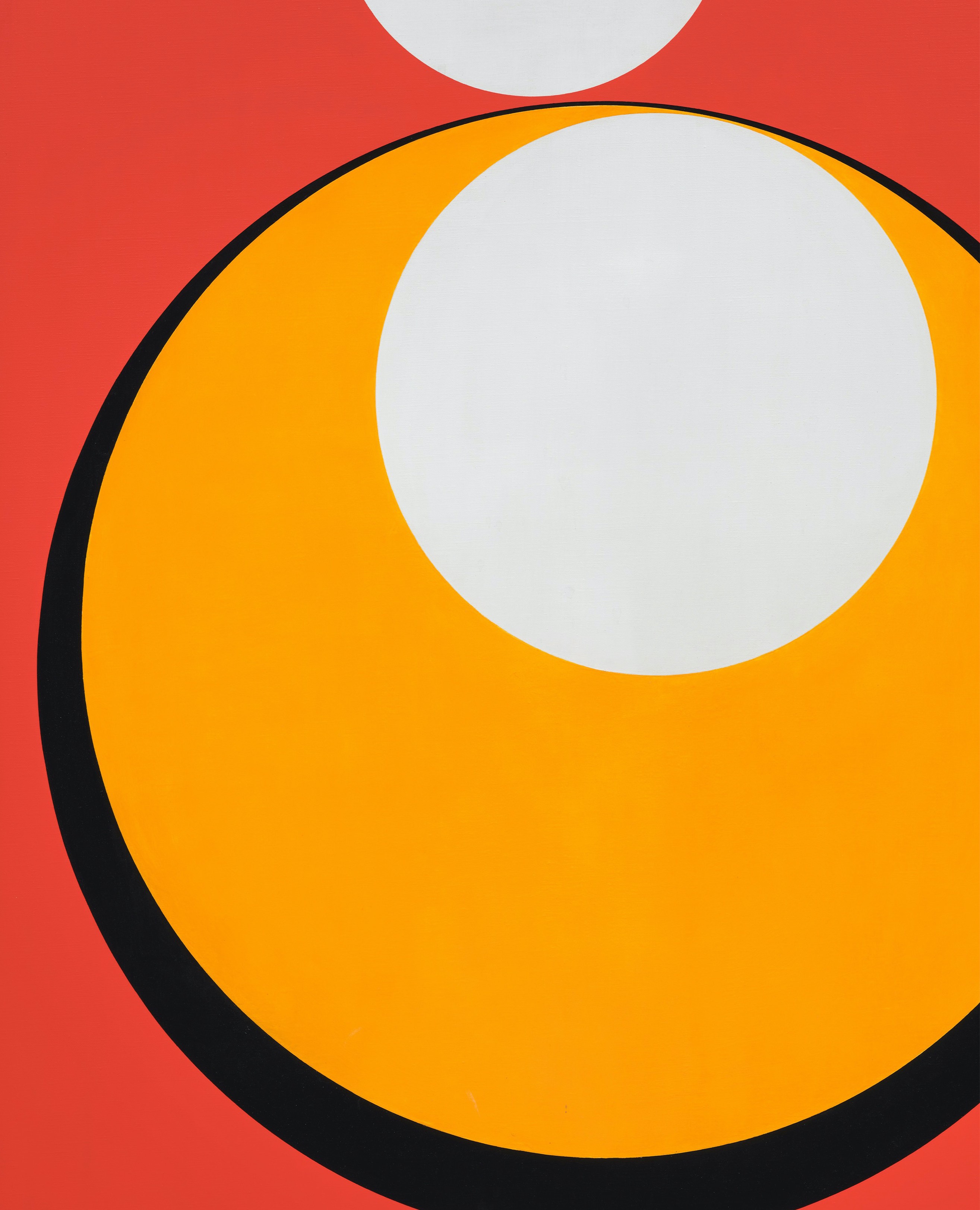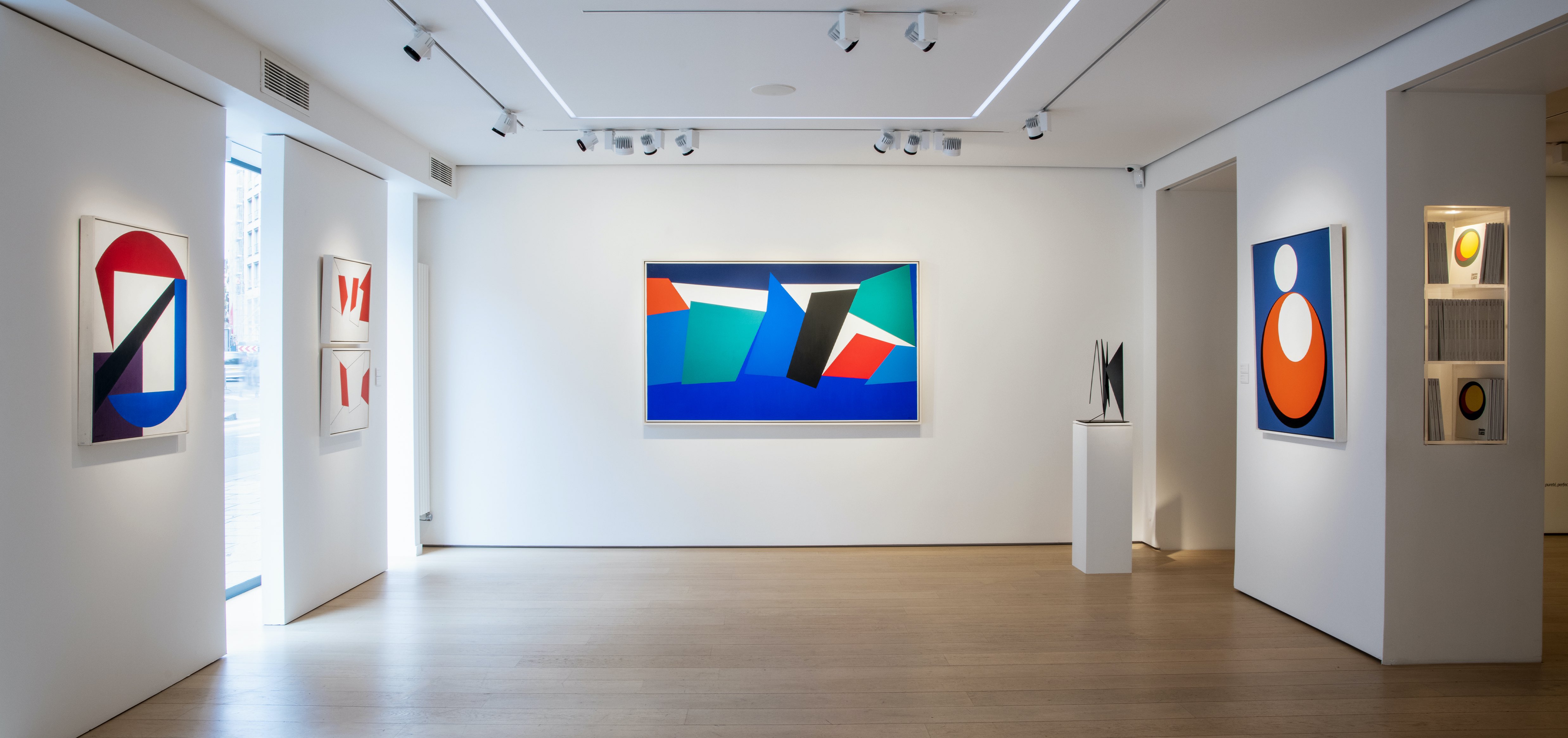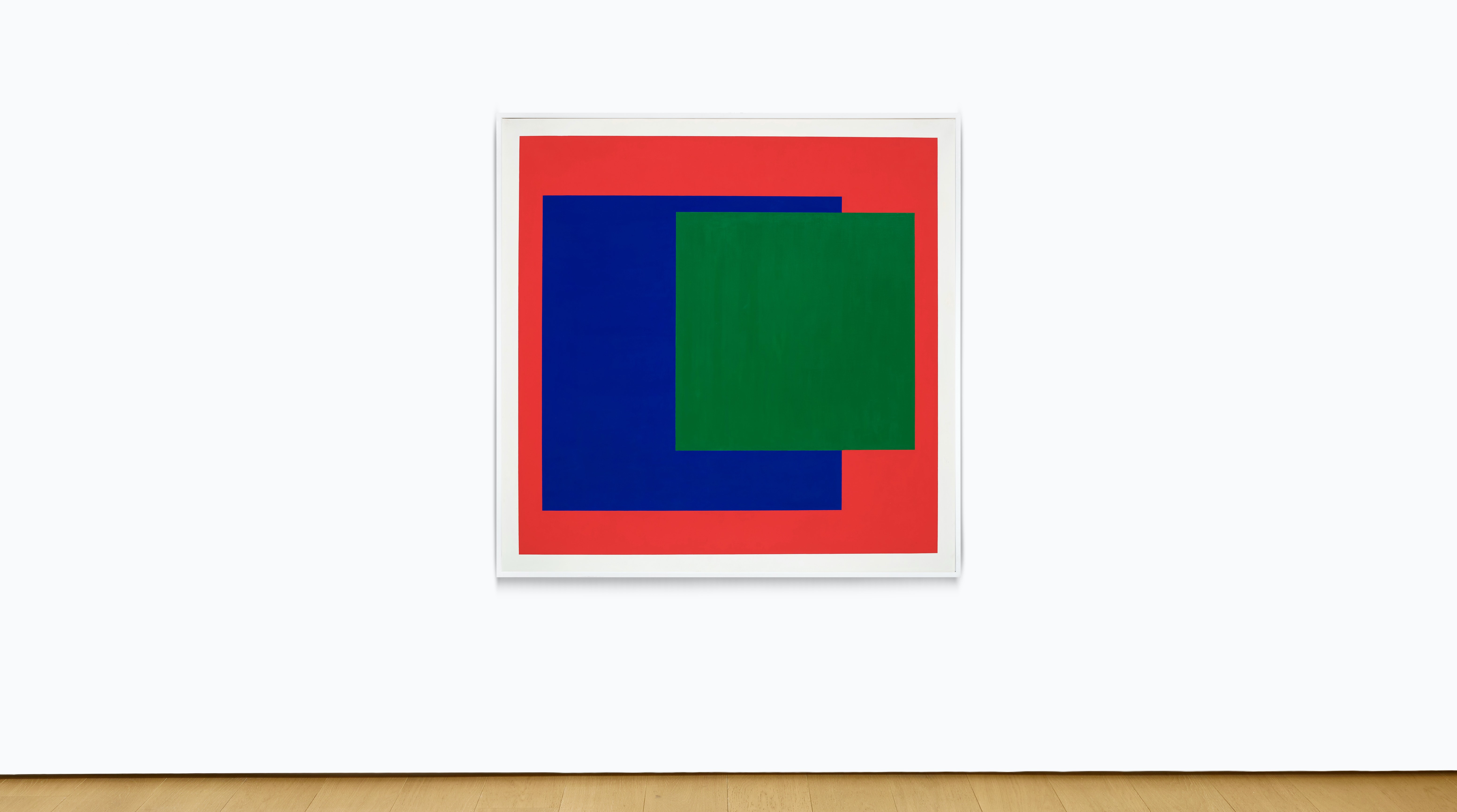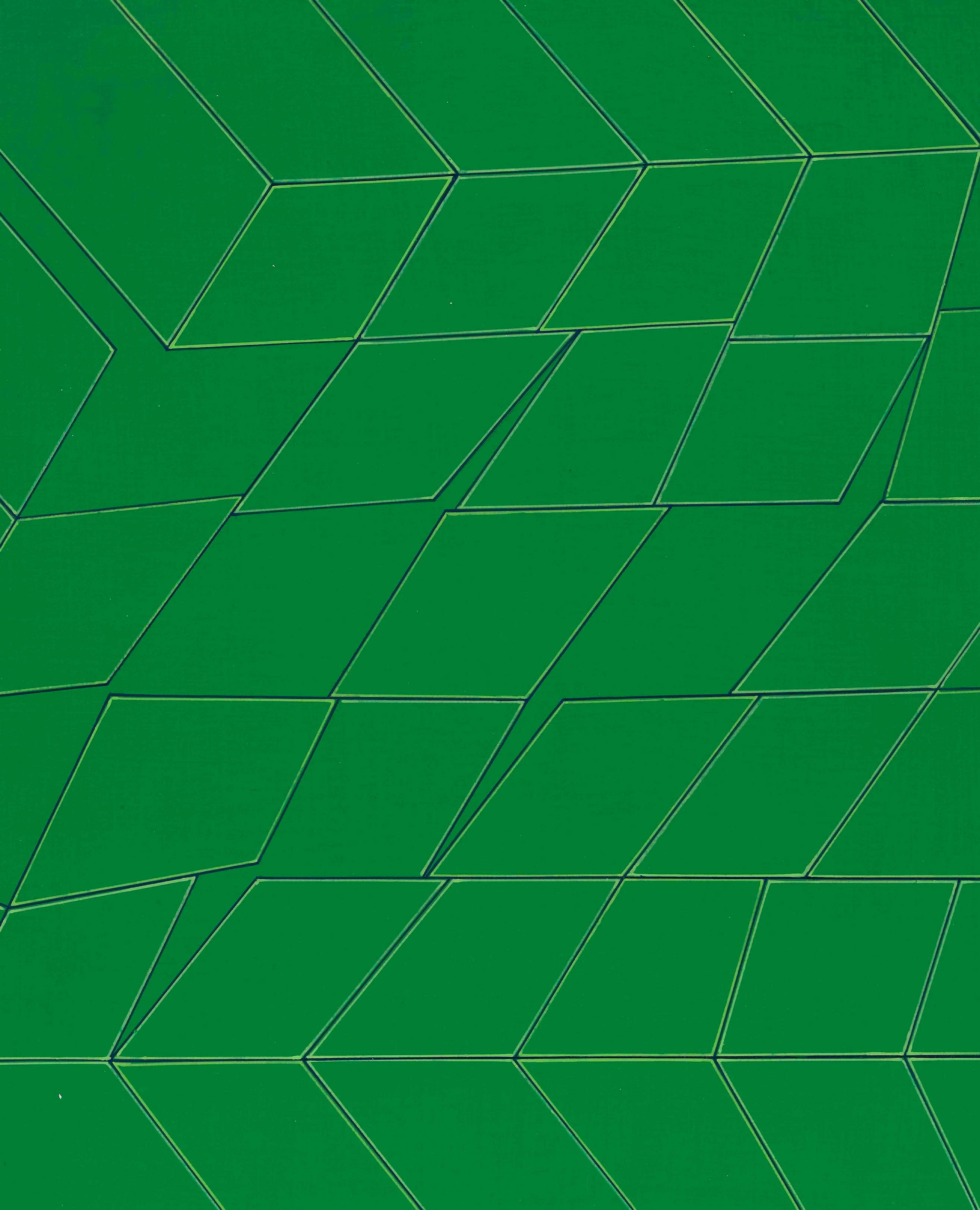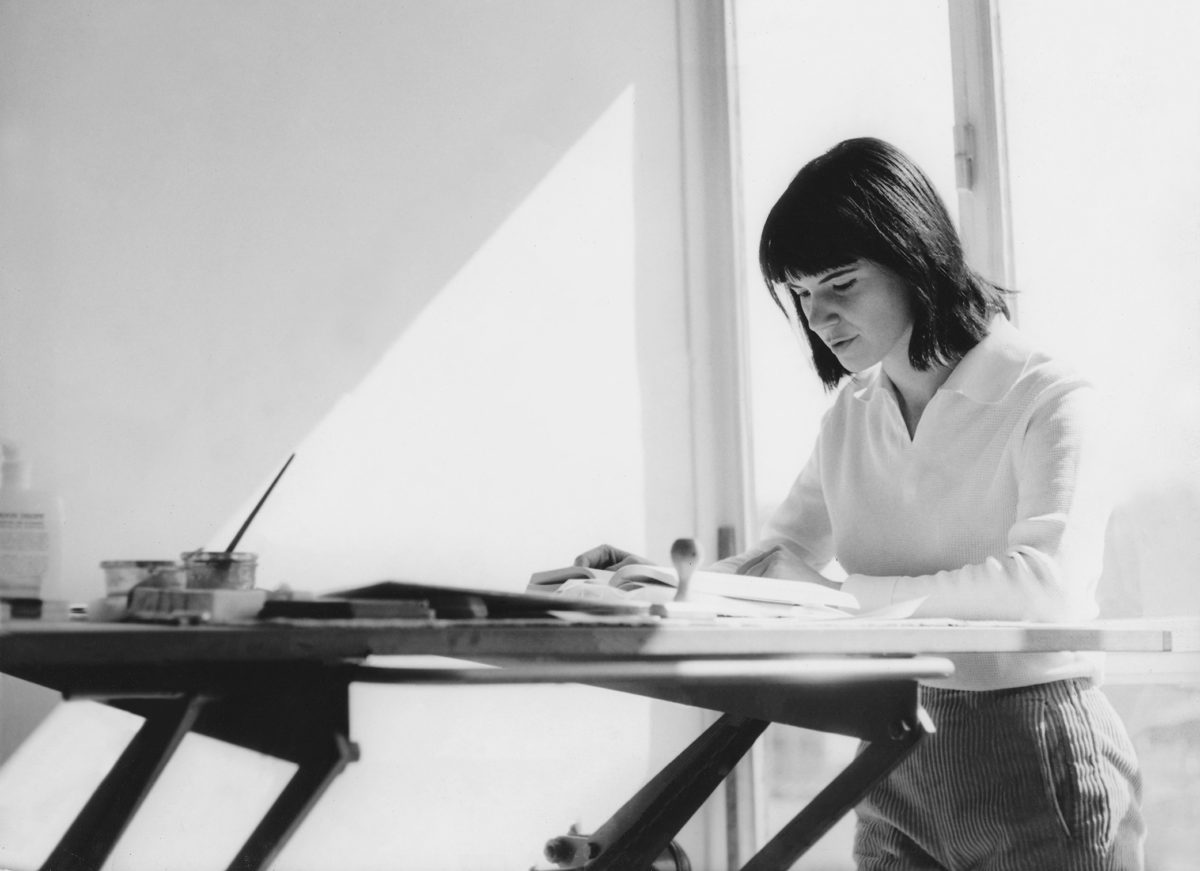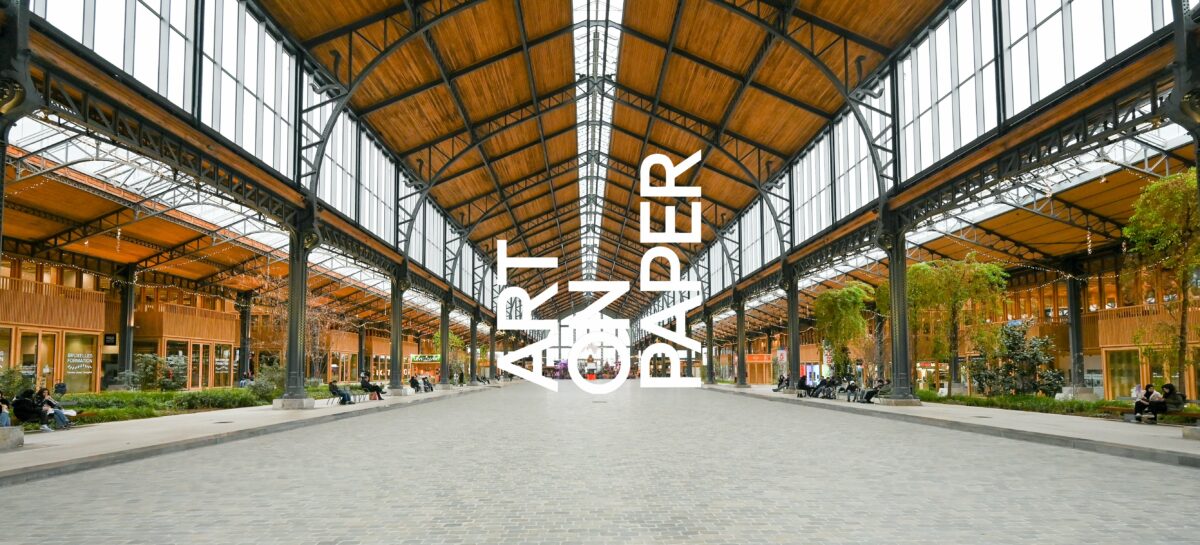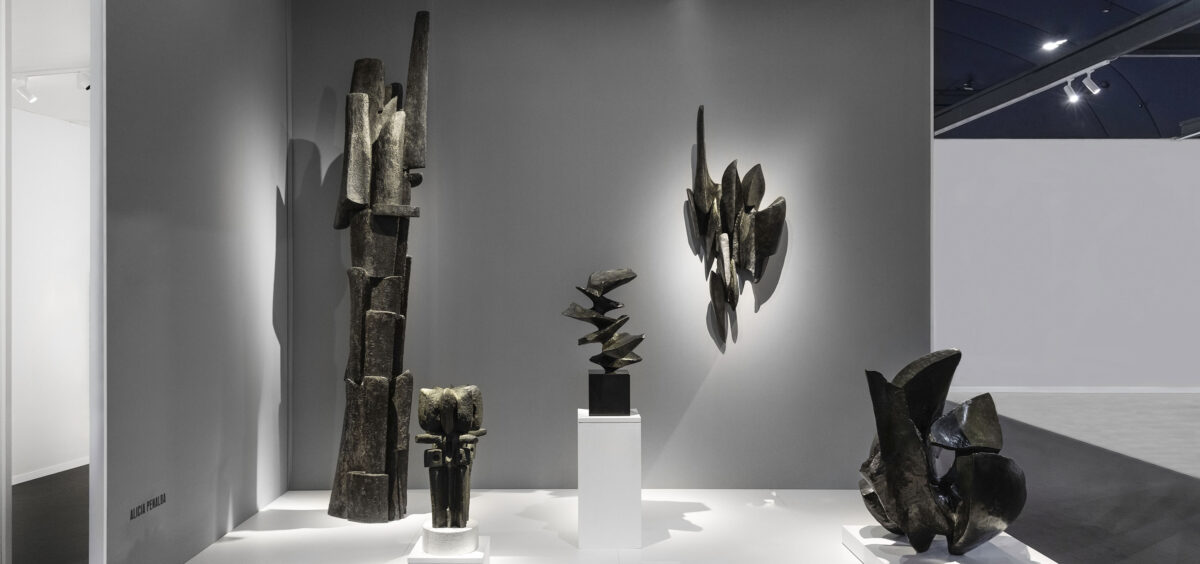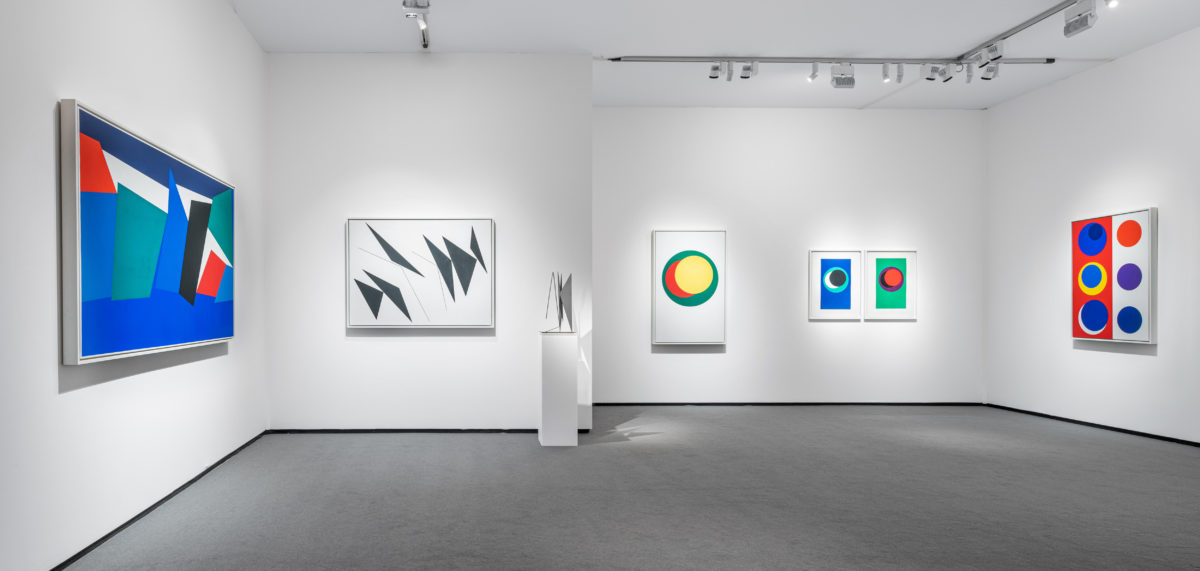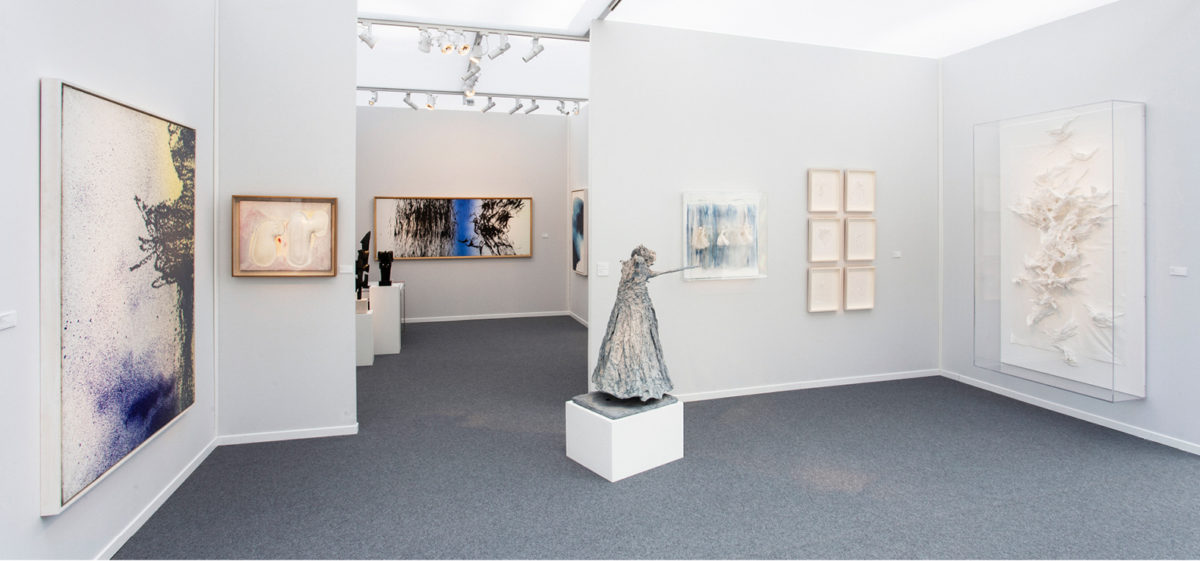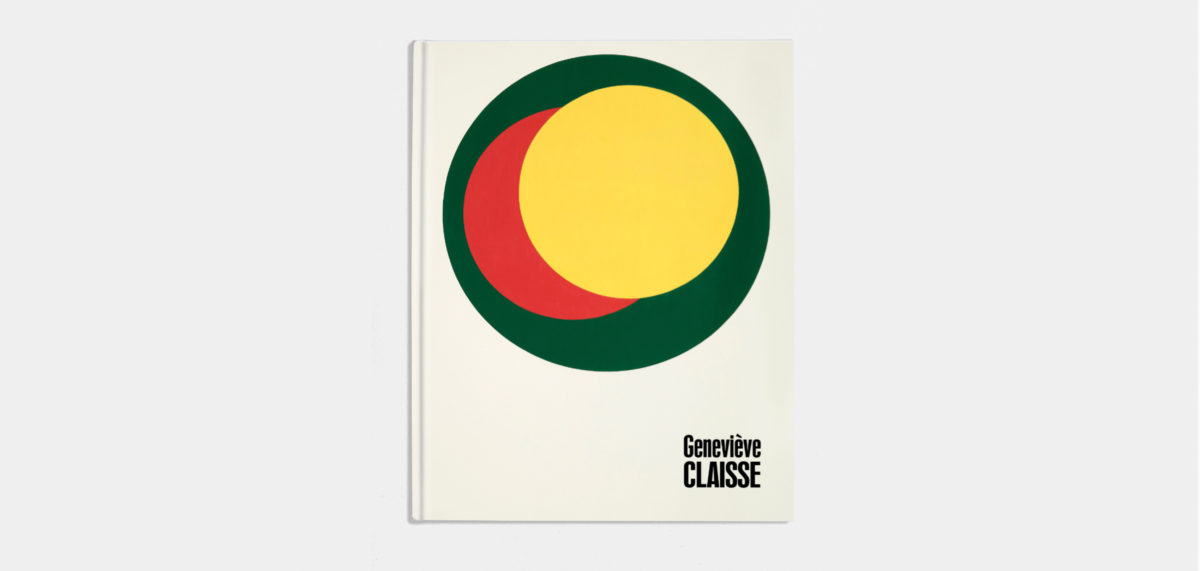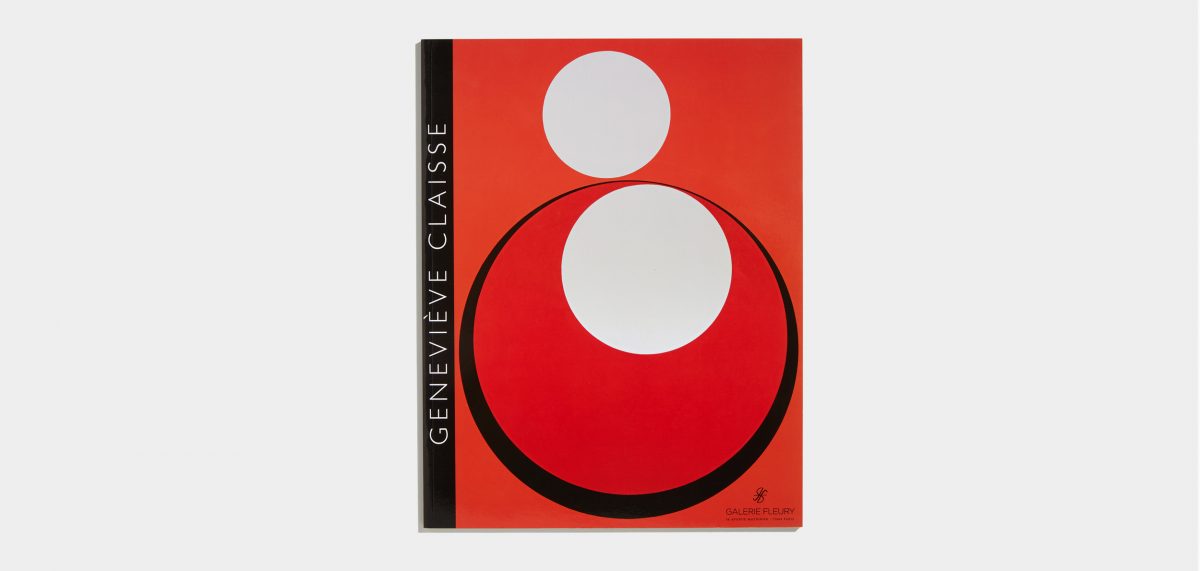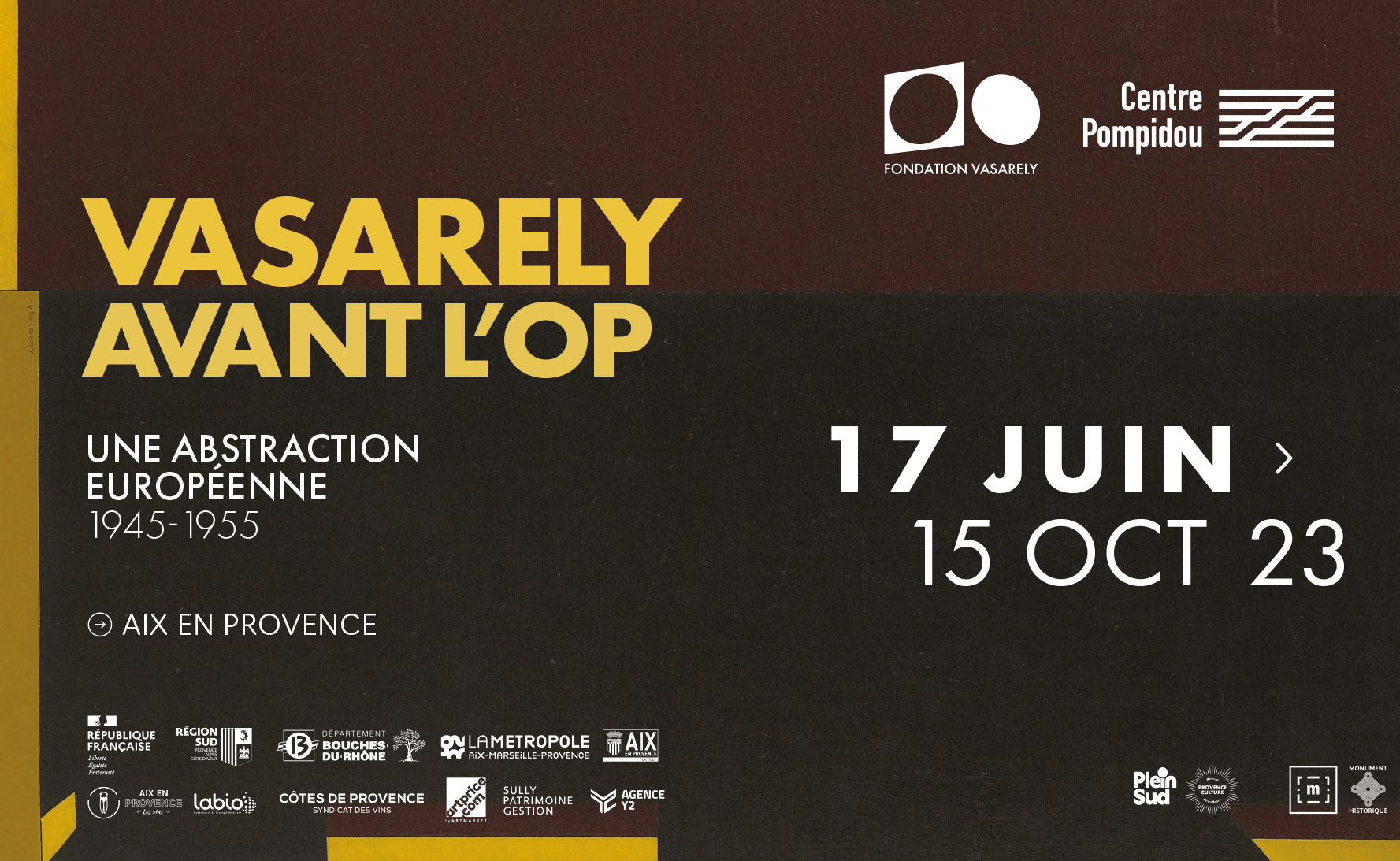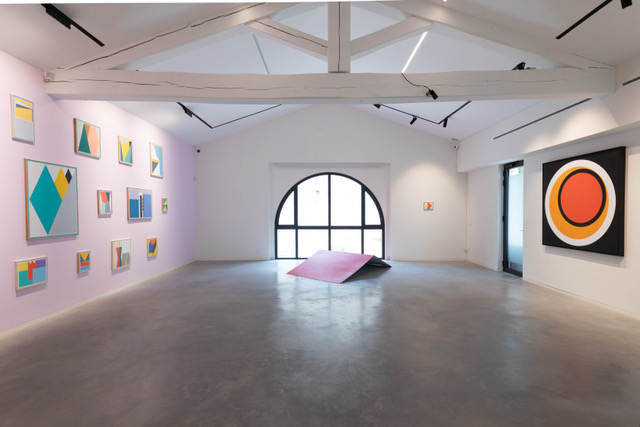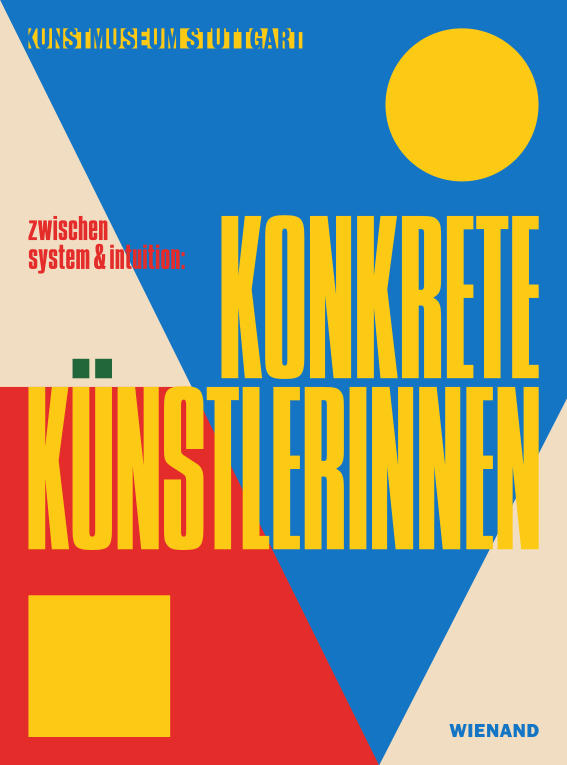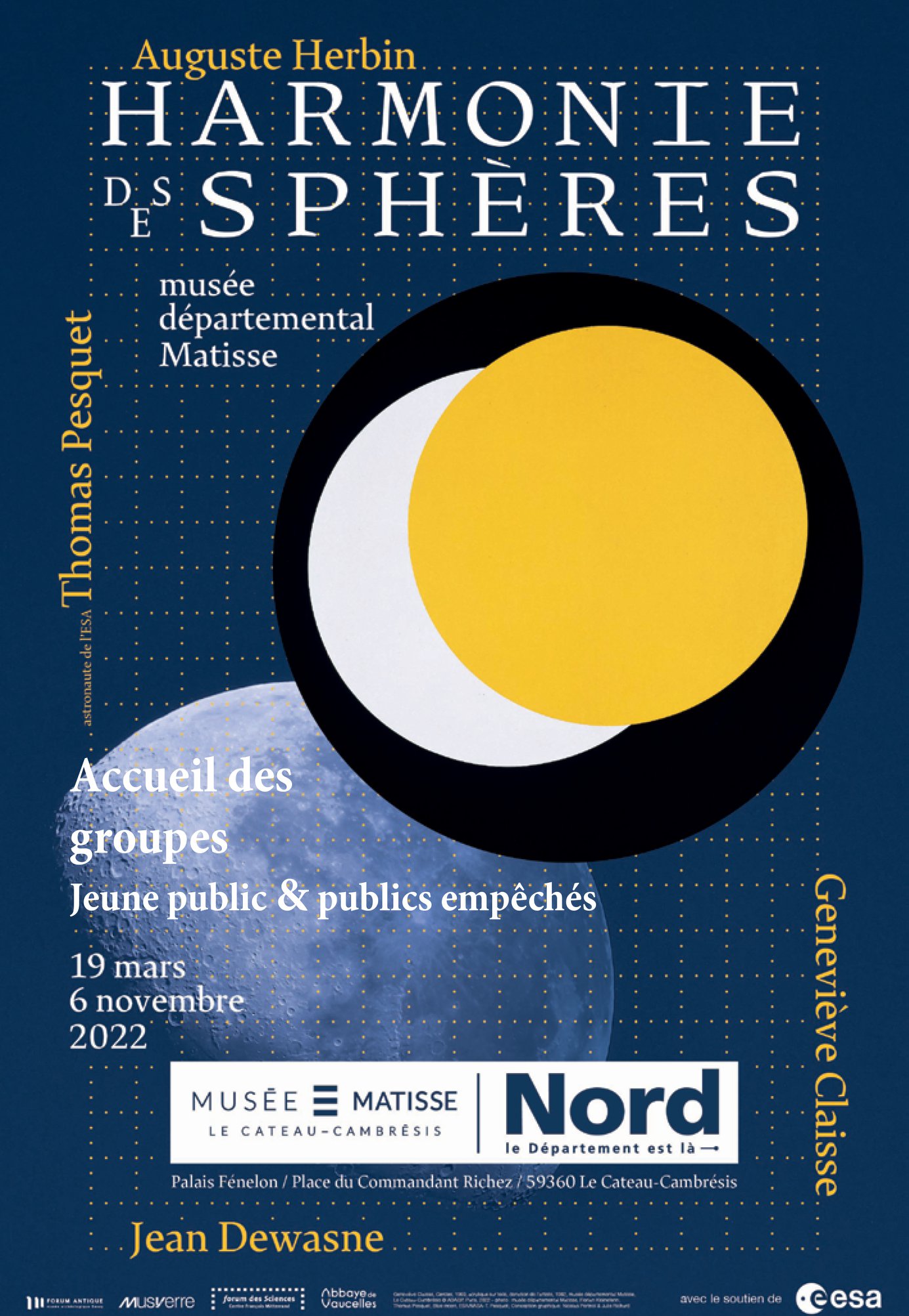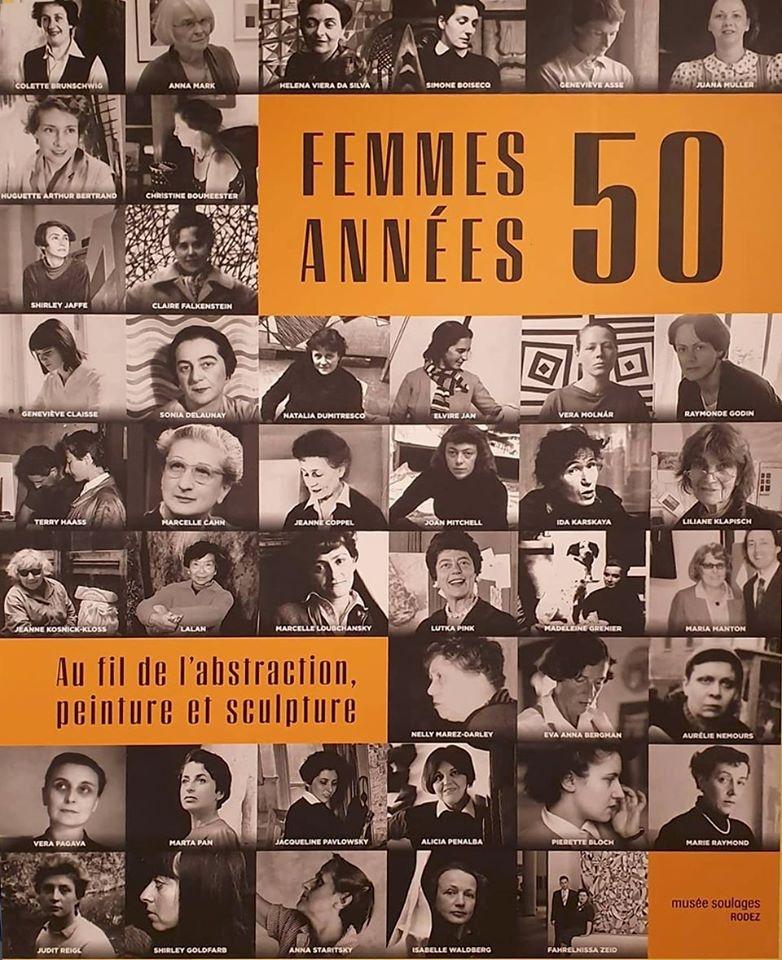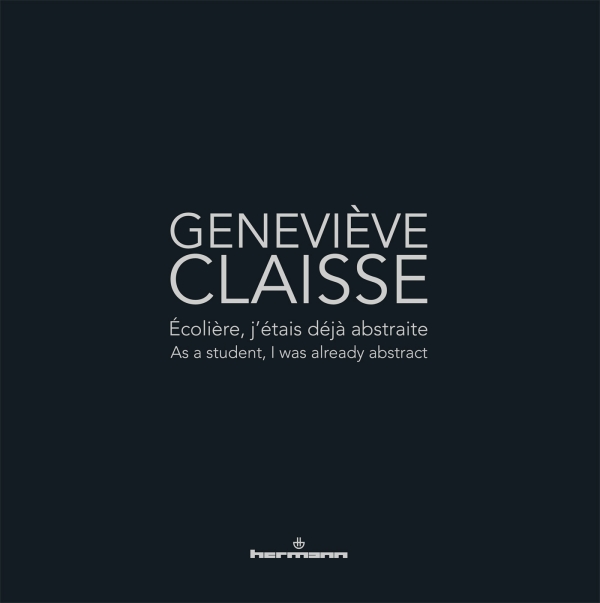A leading figure in geometric abstraction, Geneviève Claisse (1935–2018) was a French painter. Her rigorous and colourful work is distinguished by the clarity of its forms and an exceptional chromatic harmony, blending visual purity with formal perfection.
Geneviève Claisse was born in 1935 in Quiévy, a small village near Le Cateau-Cambrésis. A self-taught artist, she discovered geometric abstraction through reading art magazines such as
Art d’aujourd’hui, which at the time praised avant-garde artistic movements.
Fascinated by the theoretical writings of Auguste Herbin, she was initially unaware of their family connection; it was only at the age of 18 that she met her great-uncle in Le Cateau-Cambrésis. Herbin saw her work and encouraged her to pursue this artistic path.
Claisse held her first exhibitions in 1958 in Paris and Cambrai. The following year, she moved to Paris and became her great-uncle’s assistant while continuing her own artistic research. They shared a studio for one year.
In 1960, Claisse took part in the Salon de Mai, and in 1961, she became one of the artists represented by the Denise René gallery. From that point on, the gallery regularly showed her work in its spaces in Paris and New York, as well as at international art fairs. The artist started exhibiting in many cities: Copenhagen, London, Paris, Tel Aviv…
Artistically speaking, the 1960s were a prolific period for Geneviève Claisse. In 1966 in particular, she created several serial compositions centered around the circle and the triangle, which also appeared in her sketchbooks. She would continue working on these series for ten years, eventually producing some of the most significant paintings of her career — works that would later be exhibited around the world.
In 1971, Geneviève Claisse opened a second studio in Écluzelles. During the 1970s, she participated in the Salon de Mai and exhibited in New York, Paris, Amsterdam, Basel, and other cities. This period was marked by a return to rectilinear forms, particularly in the ADN series, where the artist continued her exploration of colorimetry, previously developed through her work with circles.
In her late 1970s and early 1980s’ production, Claisse’s research increasingly focused on the line. Over several years, she methodically explored linear relationships through parallel arrangements and varying thicknesses. The lines intersect, diverge, and converge, resulting in a series of paintings akin to a form of kinetic art.
These visual investigations would enrich her body of work, even though the line would no longer always remain the central element in her later compositions.
In 1982, the Matisse Museum in Le Cateau-Cambrésis dedicated an exhibition room to Geneviève Claisse’s work.
During the 1980s and 1990s, she exhibited in Brussels, Milan, Paris, Rome, Zurich, among other cities. Her research evolved: fine lines gave way to thicker ones, which appeared as small bars of colour on the surface, positioned across the canvas without ever reaching its edges.
The late 1990s were marked by a series combining notions of transparency and fullness. The first evokes a sense of emptiness; the second, developed from the first, conveys a sense of plenitude. Deeply interconnected, these works infused movement, depth, and energy into the white space of the canvas.
In the 2000s, Claisse revealed through her painting her ability to expand on earlier research with a rigorous approach and meticulous execution.
Her works consisted of rectilinear forms, symmetrical or asymmetrical squares, set within horizontal or vertical linear frameworks, at times evoking the Suprematism of Malevich.
Geneviève Claisse’s paintings offer the viewer a sense of stability, precise and deliberate balance, and bold, vivid colour.
Geneviève Claisse passed away in Dreux in 2018.


